The True Cost of Customer Acquisition During the Holiday Season
The competition for consumer attention increases during the holiday season. So is the true cost of customer acquisition really what your dashboard reports?

The holiday season, often celebrated for its festive cheer and significant sales boost for businesses, brings with it a less festive reality: a steep rise in advertising costs. During this period, as competition across various industries reaches its zenith, the scramble to capture consumer attention escalates, propelling advertising prices to new heights.
It's not uncommon to see ad costs inflate by more than 25% during these months, putting a strain on marketing budgets and markedly increasing the Customer Acquisition Costs (CAC) for businesses striving to stand out in the crowded holiday marketplace.
Why does the CAC increase during the holiday season?
The rise in Customer Acquisition Costs (CAC) during the holiday season can be attributed to several key factors:
1. Influx of Brands in the Advertising Space
The holiday season marks a dramatic influx in advertising, with an unprecedented number of brands vying for consumer attention. During this period, a consumer's exposure to ads can skyrocket, jumping from an average of 4,000 to 10,000 ads per day to even higher numbers.
This is due to businesses across various industries intensifying their advertising campaigns to tap into the holiday spending spree. The result is an overcrowded advertising space, where the fight for visibility becomes tougher and more expensive, significantly driving up the cost of customer acquisition. This saturation not only increases the financial burden on businesses but also necessitates more creative and impactful advertising strategies to cut through the noise.
2. Heightened Competition for Consumer Attention
The holiday season transforms the advertising landscape into an intensely competitive arena. It's not just the sheer volume of ads that escalates but also a proliferation of holiday-themed content, including special promotions, influencer marketing, and unique seasonal campaigns.
This abundance of stimuli vies for the same consumer attention, making it exponentially more challenging for individual brands to stand out. The need for more creative, engaging, and often pricier advertising strategies becomes paramount. Brands are pushed to innovate not just in messaging but also in medium and delivery to capture and retain consumer interest amidst this festive yet cluttered marketing environment.
3. Rapidly Shifting Consumer Interests
The holiday season is characterized by a rapid succession of events, each with distinct consumer behaviors and preferences. From Halloween to Thanksgiving, followed by Christmas and New Year's, consumer interests and demands evolve swiftly. This fast-paced shift challenges brands to constantly adapt their marketing strategies.
Tailoring advertising to each holiday's unique theme requires not only creative agility but also significant investment in developing and deploying new campaigns. The need to build and re-engage audiences with each change in focus adds layers of complexity and cost to customer acquisition efforts as brands strive to stay relevant and top-of-mind in an ever-changing consumer landscape.
4. Increased Digital Ad Costs
The holiday season witnesses a steep rise in the costs of digital advertising, a direct consequence of heightened demand for online ad space. Key shopping events like Black Friday and Cyber Monday exemplify this trend, with Cost-per-click (CPC) rates often surging dramatically.
Historical data shows that during these peak periods, advertising expenses can spike significantly, driven by the fierce competition among brands for digital visibility. This surge in digital ad costs reflects the high stakes of the holiday marketing game, where securing a prime online presence requires deeper investment, thereby elevating the overall customer acquisition cost for businesses vying for consumer attention in the digital realm.
5. Higher Expectations for Customer Experience
During the holiday season, consumer expectations for a seamless and personalized shopping experience reach new heights. As spending increases, so does the demand for exceptional customer service, user-friendly interfaces, and tailored marketing communications. This period sees consumers not just seeking the best deals but also valuing memorable and effortless shopping experiences.
Meeting these enhanced expectations often necessitates additional investments in technology, customer service training, and developing sophisticated, data-driven marketing campaigns. Consequently, the cost to acquire customers rises as brands must invest more resources to ensure an engaging, convenient, and personalized experience that aligns with the elevated standards of holiday shoppers.
6. Pressure to Offer Competitive Deals
The holiday season intensifies the pressure on businesses to offer compelling deals and promotions. Consumers, when inundated with options, expect significant discounts and special offers as a standard part of their holiday shopping experience.
To remain competitive and appealing to bargain-seeking shoppers, brands often resort to aggressive pricing strategies and value-added promotions. While these deals can increase the volume of transactions, they also often eat into profit margins. The necessity to balance appealing offers with profitability adds a layer of complexity to the customer acquisition process. As a result, brands not only face the challenge of attracting customers but also of doing so in a manner that sustains or enhances profitability, adding to the overall cost pressure during the holiday season.
State of customer acquisition costs during the holiday season
The holiday season traditionally spells increased revenues, but it also brings a significant rise in Customer Acquisition Costs (CAC) for brands. Several factors contribute to this trend, making it a complex period for marketers.
1. Increased Advertising Expenditure
The competition for ad space during the holidays leads to a spike in advertising costs. For instance, advertising on platforms like Amazon saw a 30% increase, with costs rising from $0.93 to $1.20 per click, as per Vogue Business. This inflation is partly due to the increased number of brands advertising and partly due to consumers' heightened responsiveness to holiday marketing.
2. Privacy Changes Impacting Data Collection
Digital marketing has become more challenging with added privacy measures on many platforms, hindering the collection of customer data. This shift has led to a substantial increase in CAC, with some brands witnessing up to a 50% rise, as reported by Vogue Business.
3. Shift in Consumer Shopping Habits
The pandemic-induced shift towards e-commerce has significantly altered consumer behavior. According to a Gartner survey, 46% of consumers increased their frequency of online shopping between March and May, while 63% reduced their in-store shopping frequency. This change necessitates a more robust online marketing strategy, contributing to higher CAC.
4. E-commerce’s Growing Dominance
Amplified by ongoing pandemic-driven trends, e-commerce is set to play a crucial role in the 2023 holiday shopping landscape. Deloitte's annual holiday retail forecast paints a promising picture: overall holiday retail sales are projected to see a healthy increase of 3.5% to 4.6%. More notably, e-commerce is anticipated to experience a significant boost, with sales expected to grow by 10.3% to 12.8% year-over-year.
This surge suggests that e-commerce holiday sales could reach an impressive $278 billion to $284 billion in the 2023-2024 season. These figures not only reflect the continuous upward trajectory of online shopping but also indicate the intensifying competition and heightened customer acquisition costs that brands may face in the thriving digital marketplace during the holiday season.
5. Evaluating CAC in Light of CLV Amidst Rising Costs
In the current climate of escalating customer acquisition costs during the holiday season, it becomes imperative for brands to assess the immediate CAC against the backdrop of Customer Lifetime Value (CLV).
This approach is particularly crucial in the current environment, where attracting new customers comes at a premium. Understanding the potential long-term profitability and value of each customer allows businesses to evaluate the true effectiveness of their marketing investments. By focusing on both the immediate and future returns, brands can more effectively navigate the competitive and costly holiday landscape, ensuring sustainable growth and profitability.
Given these factors, simply increasing marketing budgets is not a sustainable solution for many brands. Instead, a more nuanced approach, balancing the immediate costs of acquisition with the long-term value of customer retention and loyalty, is essential. The holiday season, therefore, demands not just an increase in marketing spend but a more strategic, data-driven approach to customer acquisition, customer engagement, and overall marketing effectiveness.
What can brands do to stand out this holiday season
In the fiercely competitive holiday market, brands need out-of-the-box thinking to differentiate themselves and manage customer acquisition costs effectively:
1. Prioritize Customer Retention
In the competitive holiday market, emphasizing customer retention becomes key. Existing customers not only have a 50% higher likelihood of trying new products but also typically spend 31% more than new customers. To capitalize on this, brands should adopt personalized strategies that foster loyalty and connection. This can include tailored gestures like handwritten notes, as offered by services like IgnitePOST, thereby enhancing the customer experience with a personal touch.
Additionally, actively engaging customers through loyalty programs can deepen their relationship with the brand. These efforts not only cultivate loyalty but also effectively reduce the overall Customer Acquisition Cost (CAC), making them a strategic move in the high-stakes holiday season.
2. Explore Unconventional Channels
In an era of digital marketing, exploring alternative avenues like direct mail can offer a distinctive edge.
Direct mail, with its physical, tactile presence, breaks through the noise of the crowded digital landscape, providing a unique and memorable way to connect with customers. This approach not only garners attention but also caters effectively to a diverse customer base, transcending industry boundaries.
By incorporating direct mail into their marketing mix, brands can offer a more personal touch in a predominantly digital world, thereby differentiating themselves and fostering stronger customer relationships.
Want to see the impact of handwritten notes in direct mail on business? Read case studies here.
3. Maximize Impact with Referral Programs
Referral programs are a potent tool in reducing Customer Acquisition Costs (CAC). Studies show that customers acquired through referrals have a 37% higher retention rate compared to other channels.
By incentivizing your existing customer base to refer friends and family, you not only lower the cost of acquiring new customers but also tap into a more receptive and trust-based audience. Referrals create a win-win scenario where businesses benefit from cost-effective acquisition while customers enjoy rewards for their advocacy.
4. Implement Omnichannel Marketing
An effective omnichannel strategy is pivotal in crafting a seamless and engaging customer journey. By synchronizing your brand's presence across various platforms - from social media to in-store experiences - you can offer a consistent and personalized narrative.
This approach involves fine-tuning your messaging and engagement tactics to align with the specific nuances of each channel while maintaining a unified brand voice. The key is to ensure that every interaction, whether online or offline, resonates deeply with your audience, thereby bolstering brand recall and fostering loyalty in a crowded market.
5. Enhance Customer Engagement with Unique Experiences
Creating exceptional and memorable customer experiences is essential for standing out during the holiday rush.
For instance, a lifestyle brand might launch an interactive holiday-themed virtual reality (VR) experience, allowing customers to virtually 'try on' products in a festive setting. Alternatively, a brand could host live, online Q&A sessions with industry experts, offering personalized advice and tips for holiday shopping. These distinctive engagement strategies go beyond typical marketing efforts to foster a deeper, more emotional connection with the audience, encouraging long-term loyalty and setting the brand apart in a crowded marketplace.
By adopting these strategies, brands can not only stand out in a crowded market but also build a more sustainable and cost-effective approach to customer acquisition and retention.
Wrapping up
As the holiday season brings a flurry of new customer acquisition opportunities, it's crucial for brands to remember the equal importance of retaining existing customers.
The key to a successful holiday strategy lies in harmonizing efforts to attract new shoppers while simultaneously deepening loyalty with current ones. This dual focus not only maximizes the festive season's potential but also lays the foundation for long-term brand success and customer satisfaction.
Looking for innovative ways to reach your customers this holiday season?
Explore the power of handwritten notes and direct mail marketing with IgnitePOST.
Read more insights
-min.png)
Get expert insights for real mail campaigns
Everything you need to launch, run and scale handwritten card mail campaigns. Subscribe today!


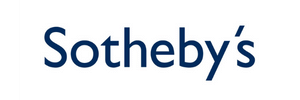

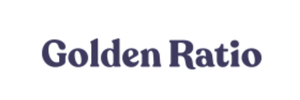





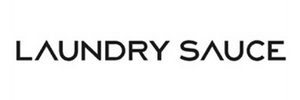
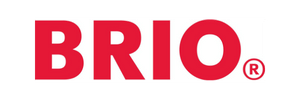



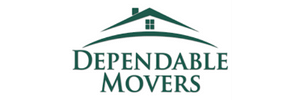
















Ready to create your first magic moment?🚀
Start using IgnitePOST today. It's free to signup!
No contracts, no commitment and unbelievable support.
.svg)



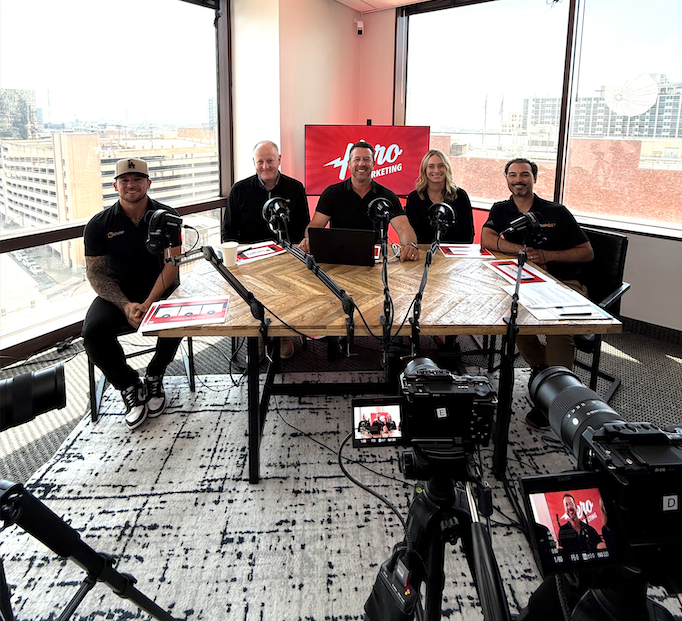



.png)